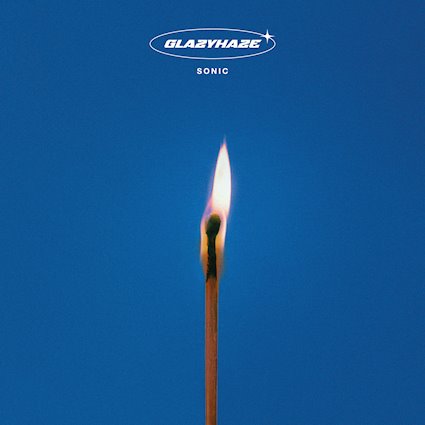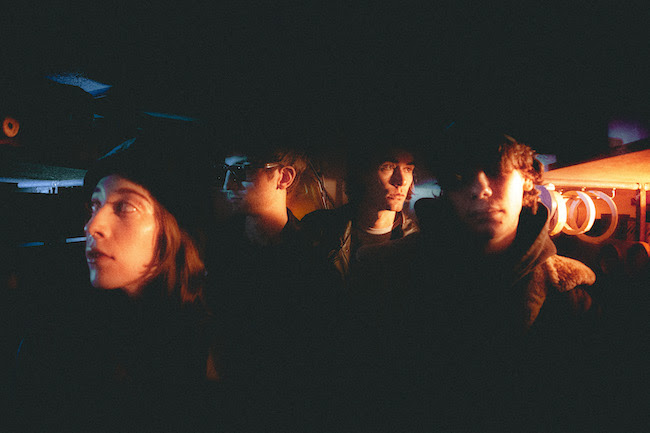
April 3, 2025| Ellie McGee | RELEASE REVIEW
Glazyhaze – Sonic | Album Review
Not all second albums have to be difficult, at least according to Glazyhaze, with their new record Sonic they explore their sound much further and deeper with great success.
Hailing from Venice, and in possession of a name that’s very nearly an onomatopoeia for a certain flavour of ethereal metal, Glazyhaze have returned with another suitably otherworldly amalgamation of shoegaze; Sonic. Arriving just shy of two years after its predecessor, debut album Just Fade Away, Sonic is a slippery, chunky beast of an album, drawing influences from all over the sprawling web that is the world of shoegaze, pop and indie/alternative. It also quite literally has a dark side and a light side (as symbolised by the match on the cover), and features an exploration of love and self-discovery. In short, anyone looking for the standard metal offering of 8-10 short, fast, brutal tracks with more riffs than themes…should probably look elsewhere for their next new favourite band.
“there’s a heavy, neo-psychedelic version that’s full of distortion, and a shimmering, melodic version that’s got more in common with dream pop than the other shoegaze.”
Unsurprisingly, the first hurdle here is deciding where exactly to start, because with so much going on under the bonnet, it’s far from obvious. Glazyhaze themselves have an idea though, because they describe themselves as simply a shoegaze band. Which isn’t inaccurate, in the same way that calling Darkthrone a black metal band isn’t inaccurate, it’s just a bit more complicated than that. Which is fitting, because a lot of shoegaze is also not all that simple; there’s a heavy, neo-psychedelic version that’s full of distortion, and a shimmering, melodic version that’s got more in common with dream pop than the other shoegaze. As the name would suggest, Glazyhaze have historically been solidly in the latter camp. 2023’s Just Fade Away is a breathy, soaring piece of post-esque shoegaze with some crispy distorted edges, sounding not unlike Amesoeurs having a go at the genre, while Sonic is almost a different creature entirely. Upon listening, it appears to be in much the same vein as its predecessor, but what was a delicate veneer of distortion over fragile melodies is now front and centre, with buzzy, clunky alt-rock riffs forming the bulk of the sound. The melodies are still there, and they’re still delicate compared to the surrounding riffs, but the fragility has gone, replaced with a ringing, lingering quality that holds its own against the riffs, but retains that dreamy, ethereal feeling. The Amesoeurs comparison still holds water, but this time around they’ve teamed up with My Bloody Valentine to play around with some early Placebo riffs and surprisingly deadly pop hooks.
 Photo Credit:
Photo Credit: Cristiano Donadel
This is where the band’s idea of the album having a light and dark side becomes really interesting, because it works on multiple levels. There is indeed a difference in vibe between the first half, which tends to emphasise the dreamy, soaring end of shoegaze, and the second half, which gets more into the harsh, distorted end of things. Track five, ‘Dwell’, doesn’t really fit into either, and exists as a buffer of sorts between the two. Then there’s the sound itself, which superficially sounds more like the dream pop variety of shoegaze, but the more you listen, the more you become aware of the darker, harsher underpinnings, and you realise that despite the split across the two halves. Glazyhaze are actually drawing from both sides of the shoegaze well across the board. Each side is given its time in the spotlight though, as are the gauzy post elements, the burly distorted riffs, and the hooks that hide in deceptively simple places. It’s clearly new ground for the band, and yet it also sounds like they’ve been making albums like this for years, as they navigate the different moving parts and hold each one up to the light in turn.
If this is their idea of the “difficult second album”, then one has to wonder what the rest of their career might look like.



